Kia ora koutou. Public holiday on Monday AND daylight savings begins on Sunday.
The week in Greater Auckland
On Monday, Matt wrote about the proposed Reshaping Streets legislation changes, for which submissions closed on Monday night.
In Tuesday’s post, Heidi encouraged all of us to get out and vote, march and motivate: vote in the local body elections, march in today’s Fridays for Future climate protest, and motivate each other to join in.
Wednesday’s post, by Heidi, was about the low standard of Temporary Traffic Management (TTM) practised in Auckland, and how it could be improved. (Updated to add: check out this live report from the cycleway on how the Te Atatū underpass situation has been resolved.)
Yesterday, Matt wrote about in-progress and upcoming changes for Midtown, including the Queen Street Waihorotiu project and Te Hā Noa Victoria St Linear Park.
Vote and march!
To reiterate Heidi’s post from Tuesday:
Vote
Enrolled? Got your voting papers? Fill them out and put them in a postbox before Tuesday 4th of October, or drop them off in a vote box by 12 noon Saturday 8th of October.
Not enrolled? You can still vote, by casting a special vote. Pick up a special voting pack at a service centre and then follow the same instructions as above.
March – today!
Today Aotearoa leads the world off on a rolling series of climate strikes, coordinated by Fridays for Future. Join the climate strike in Aotea Square at 1pm, to tell government and council that we want real climate action.
Motivate
Tell all your friends and whānau 🙂
Transport across the motu
Will Waka Kotahi make us get off our phones?
Waka Kotahi’s trial of new safety cameras in two Auckland locations have caught 96,000 people using their phones while driving, in just three months. The trial will continue until December and is the start of Waka Kotahi’s expansion of the safety camera network to include 100 new cameras.
Waka Kotahi pulled back from a “big bang” expansion for fear of alienating people who think the cameras are basically a revenue-gathering tool, when the agency says they are proven overseas as a highly effective tool to cut speeds and save lives – when there are enough of them, operated properly.
Bikes to the rescue!
When two Wainuiomata nurses got stuck in on their way to work in gridlock caused by a serious car crash, they abandonded their cars and swapped them for ebikes so they could get to their insulin-dependent patients in time.
Driving would have taken up to an hour due to the blocked streets, Lacey said, so the pair jumped on bicycles and went “zooming past all the cars” Lacey said.
They estimated they covered about 20 kilometres between them, reaching three patients before the traffic cleared and they were able to drive to the hospital.
Life on two wheels
In an opinion piece on Stuff, Nadia Minelli traces her love of cycling through changes in Christchurch’s urban form and infrastructure: from the low-car streets of the 70s and 80s when everyone biked, to the increasingly car-dominated streets of the 90s and 2000s, and the welcome return to safe cycling infrastructure via bike lanes built in the last few years. The piece starts with a great little video about the history of cycling in Ōtautahi: in 1936, over 11,000 cyclists were counted passing a single city corner on one day!
Jump forward 15 years and now we have these amazing cycleways through the city.
I can now bike to work safely, away from the traffic, take paths through wetlands and parks, and feel safe knowing there is a barrier between me and the cars.
During the summer months, my son and I either ride our bikes or electric scooters to work and school. 95% of the time, we ride along cycleways.
We love our great rides, and so does instagram: several of Aotearoa’s off-road cycle trails are among the world’s most instagrammed, according to analysis of photos on the platform. The Hauraki Rail Trail, Alps to Ocean Trail and Otago Rail Trail all feature in the top 30 ‘most picturesque’ cycle trails.
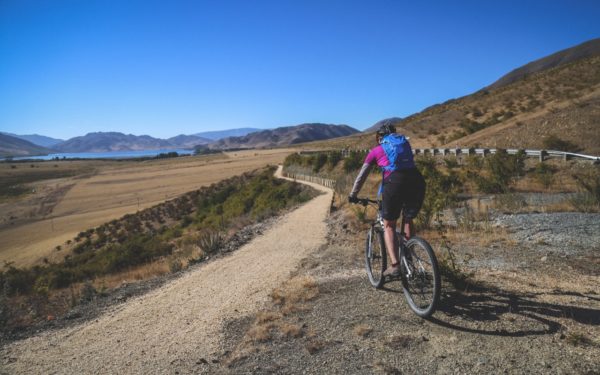
Our deadly roads
Finally, and tragically, we are grieving yet another cyclist this week. David Lane, 69, who was struck by a car in Flatbush while out for a ride on Saturday. He died at the scene from his injuries. David was a competitive Ironman athlete who loved riding and fixing bikes. Our hearts go out for yet another life taken too early by our unsafe streets and car-dominated culture.
Reclaiming streets for people
Did you know it was world car free day yesterday? While there wasn’t a lot of large-scale action in Tāmaki, cities around the world celebrated by opening streets to people.
Today is World #CarFreeDay!
Post your car-free pictures! pic.twitter.com/N2Jx7rbIUp— Nikola Medimorec (@ni_medi) September 22, 2022
Picnics in (car)parks
A few committed cycling campaigners made their mark on world car-free day, claiming a couple of parking spaces in Ponsonby and Kingsland for picnics and kōrero. Alex Dyer, a cycling advocate from Wellington, made his way to Tāmaki this week to help organise the picnics.
#WorldCarFreeDay ! pic.twitter.com/RYjQn7dOtx
— Megan (@_mharvey) September 21, 2022
We couldn’t help but notice how empty New North Road looks at the Kingsland spot, apart from the lovely burst of life at the picnic table. Where are all the cars? In the words of one picnic-er:
Nobody even drives on this trial arterial road. Time to get rid of it and use it for people actually travelling places and spending money at local shops.
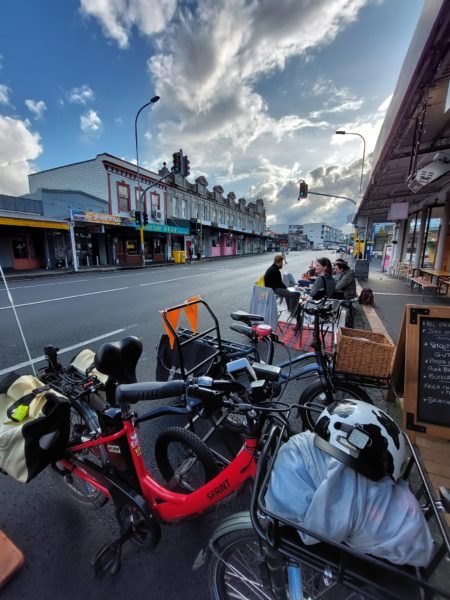
Imagining worlds without cars
To celebrate European Mobility Week, a series of solarpunk-worthy renders were released to illustrate what cities could look like without cars.
Brussels is a city that’s actively working towards a low car future, with an ambitious mobility plan (which we’ve probably linked to here already.) The city had its own car-free day last weekend, opening city centre streets to people on Sunday the 18th of September.
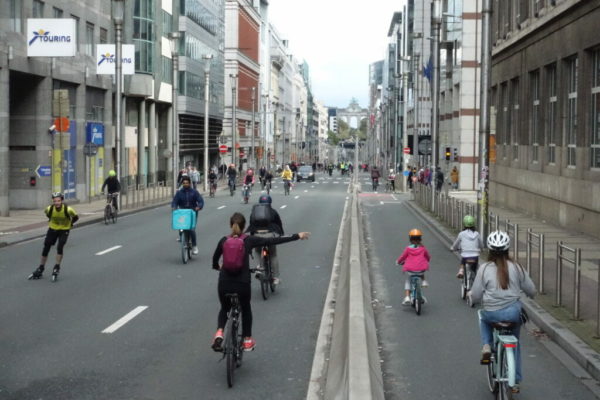
The electric future
In yet another story about where the real electric vehicle revolution is at, the market for electric scooters and three-wheelers (tuktuks!) is booming in China, India and Vietnam. Talk about flipping the fleet: while electric cars have a 9% share of the market in the region, a massive 42% of all two-three wheelers sold in the region are now electric.
Allen Abraham, an analyst at BNEF, calls two- and three-wheel vehicles the low-hanging fruit of the EV transition, particularly in emerging markets, because they are easier to electrify in design. “Adoption of electric two-wheelers is less challenging, not from a cost perspective, but from a technology perspective,” Abraham told Rest of World. “So the impact it can have over the next 10 years or the next decade is higher, because it’s easier.”
On the other hand, this infographic made us feel a bit queasy. The size of the autobox economy is staggering to comprehend. But imagine where all that innovation, energy and resource could go if it wasn’t dedicated to building and fuelling cars?
The main export commodity of European countries. pic.twitter.com/2mWWjwHZbH
— Xavi Ruiz (@xruiztru) September 20, 2022
Dreaming of a cycling transformation
Milan has become a surprising champion of bike infrastructure in Europe. As Italy’s most wealthy city, it has also been its most car-dominated – but not for long. A city-wide bike network plan is transforming Milan’s streets. With a budget of 250 million euro, the plan will deliver 680kms of bike lanes by 2035, with the first major routes completed this summer. The aims of the plan are to make Milan’s notoriously polluted air cleaner, reduce congestion, and increase safety for people walking and cycling.
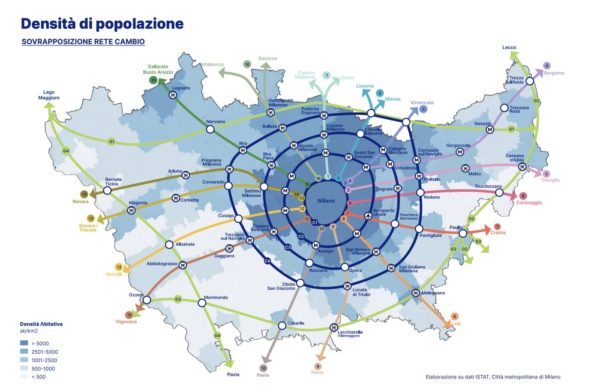
And even in the world’s best cycling countries, the infrastructure is constantly being improved. Bicycle Dutch tells the story of a new cycle highway between two fast-growing towns in the Netherlands. It’s induced demand in action, but for bikes.
To keep its new expansions accessible, the city is seriously investing in cycling. In 2016 Amersfoort wrote in its Cycling plan: “A population growth from 154,000 to 170,000 means 10% more bicycle movements in the city if bicycle use remains the same.“

Investing in cycling, the Norwegian way
For obvious reasons, Norway loves a tunnel. A new, 430m tunnel just for pedestrians and cyclists has opened in a small Fjord town. We’re usually a bit skeptical of unneccesarily expensive infrastructure projects when some simple road reallocation will do, but we’ll admit we’d happily zoom down this, ringing our bells to test the echo.

Move to Arkansas, get a free mountain bike
We’ve seen a few stories out of the USA about bike subsidy schemes. Arkansas, a mountain-biking haven, is trying to entice people to move to the city by offering a free mountainbike at $10,000 to fund the shift. We can think of a few towns in Aotearoa that could capitalise on their great bike trails and do the same.
Streets for people in NYC
Security around the UN General Assembly had the unintended side effect of making the surrounding streets suddenly gloriously free of cars and safe for people on bikes. Do you think Jacinda got out for a cruise on a citibike? What a way to see New York!
MY GOD! #bikenyc 2nd Ave!! CAN WE KEEP THIS?!!
Yeah I know it’s for UN General Assembly but getting rid of car parking and then placing metal barricades has made riding 2nd just like it feels in Paris! @NYC_DOT @OpenPlans @StreetsblogNYC @TransAlt @bikenewyork pic.twitter.com/iQ6nisJ7s4
— Streetfilms (1,041 videos!) (@Streetfilms) September 19, 2022
People on the move
The effects of Germany’s 9-Euro ticket are being closely examined, which is good news for people like us who want to get to the bottom of fare pricing for public transport. According to an article on Bloomberg, the 52 million tickets sold got people out of cars and reduced CO2 emissions.
Germany’s three-month experiment with super-cheap public transport reduced carbon dioxide emissions equivalent to powering about 350,000 homes for a year.
Good connections get people on trains
It’s all about networking: a big part of the success of any rapid transit system is how easy it is for people to get to it. That doesn’t mean park’n’rides, it means good local bus connections, safe cycling routes, and accessible footpaths.
Train ridership in the Netherlands has doubled over the past two decades.
This was largely achieved not by improved station coverage, but by improved station access/egress through targeted investments in bike infrastructure, (300,000+) parking spaces, and (23,000+) shared bikes. pic.twitter.com/RbOtJUwySp
— Melissa & Chris Bruntlett (@modacitylife) September 19, 2022
Gadgetbahn alert!
Still interested in the guided bus vs. light rail debate? The city of Padua (Padova) in Italy has a ‘guided bus’ system and twitter user Gareth Denis has a great thread explaining its pros and cons.
The mass of the vehicles is conveyed on the wheels. And the guideway means that the wheels are in pretty much precisely the same place on the road for every vehicle passage. That limits the number of services to no more than about ten an hour for a fairly short vehicle.
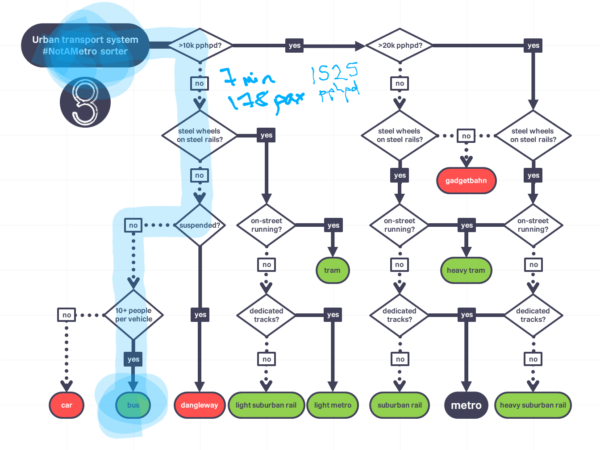
Where do we put all the cars?
Parking really is one of the key levers to pull if we want to release our cities and towns from vehicle domination. An article published by the Institute for Transportation and Development Policy talks about the need to re-think parking to tackle climate change. It looks at how parking became such an all-consuming use of urban space, and what cities around the world are doing to change their parking policy.
[…] cities have historically struggled to accommodate the growth in vehicle ownership they have experienced, and urban planners have continued to dedicate more street space to vehicle throughput and storage. The primary goal of transport planners has historically been to facilitate fast, convenient travel for passenger vehicles with the short-sighted view that ‘parking problems’ stemmed from a shortage of space.
As a result, cities have continued to dedicate valuable curb space to free and underpriced on-street parking, perpetuating a cycle of encouraging drivers to take more trips by car rather than choosing alternative transport modes.
Palmerston North City Council Transport Planner Vanuka Nanayakkara shared a cool visualisation of parking behaviour in Palmy on LinkedIn this week. WSP produced the graphic after studying the way people use parking in the town.
The findings are consistent with international evidence on parking use: businesses overestimated how important parking was to their customers, and people who visited the city centre by bike, bus or on foot stay longer and spend more.

Congestion pricing discourages driving
In an example of policy working exactly as it should, there are concerns among owners of parking garages in NYC that the planned congestion charge could put them out of business.
Several motorists told THE CITY that congestion pricing could drive them onto mass transit — which is exactly what advocates and MTA officials are hoping for.
“I think what I will do is take public transportation,” said Wilson Peguero, 42, of Bushwick, who pays $50 three times a week to park his Nissan Maxima at a West 58th Street garage while he attends John Jay College of Criminal Justice.
Plot potential parklets in your neighbourhood
Parklet Plotter is a tool to help people identify locations for micro parks and pockets of green space in their community. It maps existing green space and helps you pin-point areas which need more. It’s only got data for the UK at the moment, but we think it’s got potential to be a useful participatory tool for communities and councils.
We’ve created this map to help people learn more about the areas they live in – from which communities have the least access to green space to which areas experience high levels of social deprivation.
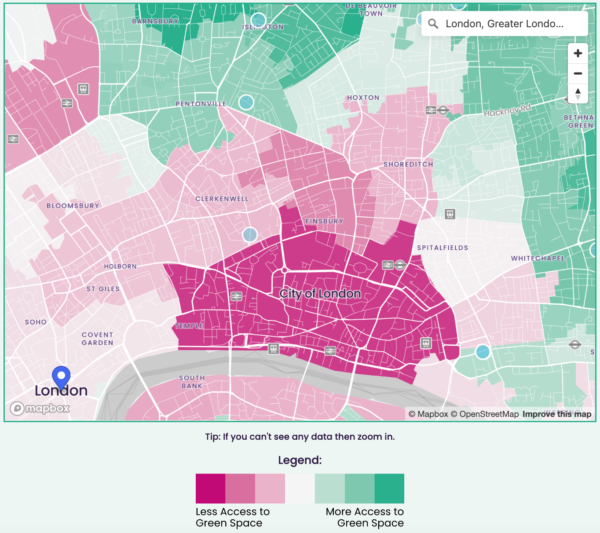
Water underground: time to daylight our awa?
An illuminating article from Jonathan Killick at Stuff (the first of a promised three-part series) looks at daylighting the awa of Tāmaki Makaurau, with a focus on Tunamau – the stream that once ran through Western Park in Ponsonby, whose presence can be felt every time it rains.
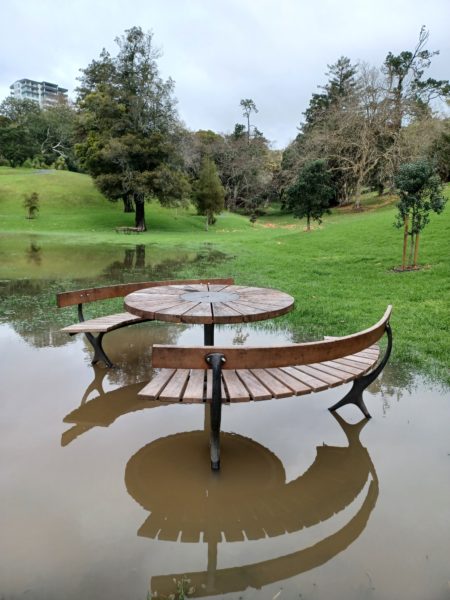

As climate change continues, the waterways of our city will continue to daylight themselves anyhow, every time it rains, so this is a pragmatic discussion to have. The article mentions Oakley Creek/ Te Auaunga, regenerated as part of the Waterview tunnel project – not just for beauty and environmental mitigation, but also to prevent the flooding of nearby housing. Is there an undergrounded stream near you that deserves to breathe again?
Head into your weekend with SJD
A new music video by Aotearoa artist SJD is made up of iPhone footage shot in 2018 in Beijing, featuring people on bikes, micro vehicles, high speed rail, and life on one humble street corner…
Enjoy the long weekend and longer evenings. A tērā wiki.
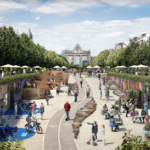



 Processing...
Processing...
Soo…..when are WK going to start fining all these idiots using their phones behind the wheel?
Maddening that they apparently desperately needed to do this trial, despite it being pretty damned obvious it is an issue and there being endless systems overseas that we could just set up.
Knowing WK, the next step will be a year or two of writing business cases around the money burning barrel, meanwhile deaths continue.
The team at Waka Kotahi who lead this stuff are actually really switched on and keen to see it progress. Enabling legislation is need to allow enforcement from these cameras, and the government (read Labour) are reluctant to do so without a trial to demonstrate accuracy and effectiveness.
How did anyone think it was wise not to get the legislation in place first?
Doesn’t this way around just risk it getting politicised before they pass the legislation?
I’m struggling to see how if a fixed camera takes a picture of someone on the phone that it wouldn’t be accurate. This seems like the actions of a populist government wanting to stay popular.
@takaite The tests of accuracy is testing whether the software can accurately detect that someone is holding a phone, without too many false positives. The effectiveness is testing that the software picks up enough of the drivers that are using phones.
@heidi, I agree. It would have been far better to enable the enforcement, but require ministerial sign off on the software to be implemented. The law could require some minimum standard of testing for the software too.
Data leads to decision-making which leads to action. We need to press for that progression to happen.
I wonder what the businesses thought of Kingsland thought? They’ve (the business association) always been very passionate about not removing carparks.
Norway builds super cool and expensive cycling tunnel and the prior post is how their biggest export is oil. That’s a summary of the 21st Century right there.
You should see the super cool roads they’re building!
But it gets better. While we get our arses handed to us over agricultural production emissions they get get get a free pass for their oil production emissions!
I ain’t playing this game.
Get get get.
That’s an interesting occurrence…
“While we get our arses handed to us over agricultural production emissions”
How do you possibly come to that conclusion? The farming industry has proposed that they pay only 15% of the cost of their carbon emissions.
Meanwhile we saw “Frank” the farmer on TV3 on Thursday night who was struggling to think of how he was going to spend the extra $200k that he was going to make this year: first he was going to pay down some debt; and then expand his implement shed; and then he was sheepish (actually cowish) to reveal that the $200k was just extra profit.
Sadly the farming industry is just taking the piss. They are also going to receive a return of capital from Fonterra next year. I am all for them paying a greater carbon charge, because they can afford it, and much of the rest of NZ can’t.
This year he’ll make plenty of money. Next year maybe not.
But that’s missing the point. Here in NZ we all have a much higher emissions profile because the production of milk (a FOOD source) is counted us the producer. In Norway the production of OIL is counted against the end user.
Imagine their emissions profile if their oil was counted the same way as our milk.
The games rigged as usual.
@jim, there’s a pretty simple point your missing there. CO2 is priced based on where it is generated. We pay tge carbon cost of producing milk, Norway pays tge carbon cost of producing fuel. It’s by far tge simplest system to ensure universal charging. At the end of the day, carbon pricing is about changing consumer behavior on a massive scale.
No. I’m not missing the point. That’s exactly the rort I’m talking about.
We feed the world food and we get nailed for it.
They feed the world fuel ( the very source of the problem) and they get off almost Scott free.
Jim, I take your point but life may not always be so rosy for Norway. The fossil fuel industry is living on borrowed time.
“A court in the Netherlands has ruled in a landmark case that the oil giant Shell must reduce its emissions.
By 2030, Shell must cut its CO2 emissions by 45% compared to 2019 levels, the civil court ruled.”
Did anyone else not know anything about World Car-free day? It was being promoted by Genless here but I didn’t hear about it or see anything until I woke up yesterday morning. (I also don’t recall seeing it in this blog over the past few weeks, although may have missed a day or two).
Admittedly I don’t watch TV and so will have missed any advertising there, but in this day and age I’m sure I’m not the only one who doesn’t watch TV or otherwise engaged in those ‘traditional’ means of communication, and was a bit disappointed in the lack of attention this got..
Te Atatu cycle underpass was closed this week
https://www.stuff.co.nz/national/129923591/major-auckland-cycleway-underpass-closed-after-construction-damage
See Wednesday’s post and The Spinoff article:
https://www.greaterauckland.org.nz/2022/09/21/temporary-traffic-management-for-a-better-city/
https://thespinoff.co.nz/society/20-09-2022/how-one-broken-underpass-represents-everything-that-is-wrong-with-auckland
So rather than fund an $8k insulin pump we instead fund nurses to go and dose people every few hours? Pharmac are just a bunch of pricks.
I wonder how the reliance on functioning transport networks figures in the bcr for that decision, in the face of climate change.
Maybe the nurses were going to help people refill their pump and change insertion sets, but the article doesn’t say that.
Isn’t a large part of the problem that some Kiwis with their poor diets and lack of exercise are putting an unsustainable burden on the health system? Yes an insulin pump may be a better solution (my brother had one.) Are initiatives like a sugar tax a reasonable way to fund this extra spending?
Is tour brother a Type 1 or Type 2 Diabetic , I’m a Type 1 and have been offered a pump and after 37 years on a needle I don’t trust them , as don’t want to go into a hypo with to much Insulin in my system when I’m asleep .
Sadly my brother died in his early fifties. He was type 1 from age 8 and went onto a pump after about 30 years. He says the pump worked better for him, but I’m not so sure. Good luck with managing your diabetes.
taka-ite – I also had a friend that died 3 years ago and also was type 1 and he got it when he was 11 and died at 74 but from Cancer . But he also had a number of Hypos , his problem was taking insulin before he ate and if he didn’t eat all of his meal the insulin level went crazy , but with me I do the other way around eat then insulin .
The biggest problem is the doctors telling you how to take and none of them have never had to do it themselves , and I had many stand up arguments with these socalled experts that don’t have the condition . Their advie may be good but until they get it they don’t know alot .
And thank you for your reply .
It would be a great attraction to have a few streets or a park or two planted out with our iconic Fuschia or Kowhai trees.
Our native birds would appreciate it.
Tourists enjoy coming to NZ to see our special scenery, flora and fauna.
Much better for the climate and the environment if tourists don’t come.
Auckland central should be the city of pohutukawas. Line all the streets with them and have a piles of red stemy bits everywhere festival in early summer.
“Public holiday on Monday”
It seems we are supposed to be mourning an elderly billionaire who (allegedly) was our head of state and who managed to turn up for work about once every ten years.
To facilitate this “mourning” employers are legally mandated to pay people for not coming to work.
Good to see that we have our priorities right.
I’m not complaining about a day off but the whole thing is crazy. Two weeks of constant coverage about the (former) richest woman in the world fawning over some old boomer with a collection of royal teatowels or something and yet people go on about inequality in the world?
I’m self-employed.
I will have to forgo a day’s income in celebration of the epitome of an institution that I despise.
As you point out, barry, it’s ludicrous. Do you know where I can get some acid? The trip cannot be any more bizarre than this monarchyfest and it will help pass the time.
Isn’t this arguably the case for literally any public holiday?
No. I wouldn’t drop acid on regularly scheduled public holidays…and Auckland anniversary day…well, that’s hugely significant, isn’t it?
Haha. Some of your best work MFD.
But wait! There’s more:
“Charles the Third, by the Grace of God, of the United Kingdom of Great Britain and Northern Ireland and of His other Realms and Territories King, Head of the Commonwealth, Defender of the Faith”.
It seems that our monarch/head of state claims to derive authority from God. In the absence of evidence for that deity we are advised to rely on faith…and the defender of that faith (and head of the British and other armed forces) is none other than the monarch, himself. (Note to atheists; you have been warned).
Now I question this claim to authority since millions of Brits have been singing “God save the Queen” over the last 70 or so years…and God didn’t (I imagine that they were disappointed). Instead, grace was capriciously withdrawn and handed to Charles (alledgedly), whereupon the Brits beseeched God to save the King. I sense that they are setting themselves up for another round of disappointment.
Now I have to apologise for stating the the Queen seldom turned up for work in NZ. My subsequent research has revealed that God underestimated the work involved and allowed it to be outsourced to a series of Governors General selected by the NZ parliament.
Since God is not involved in the section process (to be safe) the term of a Governor General is 5 years…and, of course, we don’t sing God save the King/Queen, preferring to ask God to defend NZ, so as to reduce the cost of defending the country by military means (and confident that the head of our cost-effective military has been selected by God anyway).
In the words of the late George Michael; “You gotta have faith, faith, faith”.
Me? I prefer the ancient words of wisdom as dispensed by Dennis and the peasant woman:
https://sluggerotoole.com/2018/04/18/strange-women-lying-in-ponds-distributing-swords-is-no-basis-for-a-system-of-government/
I worked today. But that’s ok cause I never considered myself to have a queen.
So NZTA will install a 100 more cameras to WATCH and NOT FINE more people on their phones? Am I missing something here? If that’s true that money should come from whoever came up with that brilliant idea and NZTA CEO. The amount of contempt towards the public (and public money) from this organization is just unbelievable.
What you are missing is that safety camera already can and d issue fines for things like speeding and red light running. The additional investment in safety cameras will allow an increase in those types of enforcement.
The trial has demonstrated has shown the feasibility of using the technology to detect other types of traffic offenses and given some indication of the scale of the poor compliance. However it requires legislation change at central government level to allow those other types of offenses to actually be ticketed based on camera detection.
If the legislation change happens then that opens up more options in the types of enforcement the additional camera investment could be used for, but it is not a wasted investment without the change.
The problem here is a political one, that impacts a range of issues where we lag behind international best practice, use of camera enforcement, scale of our fines and penalties, and applying demerit points to camera detected offenses. Unfortunately political calculus impacts these decisions. We really need all the major parties to adopt a unified position on fixing these issues so they can be fixed without fear of the ballot box implications.
Oh I see. I didn’t know that. I thought the cameras were used solely for the purpose of montoring phone usage. If they actually have useful functions then sure it’s great that there will be more of them!
As I’ve said elsewhere, I think GA may have to change gears and sharply within the next month. We’re moving from a position where we’re decrying the “layer of clay” within AT that is stopping any decent reforms from happening, to trying to protect AT’s independence (and the very idea of transit and active modes) from incoming mayor Wayne Brown and a hyper-reactionary council.
what?
You’re able to read the polling as well as I do. Brown the reactionary looks like he’s going to walk it in from here (because Labour have totally fucked up Efeso Collin’s campaign? Or because of the incredible barrier of racism that Efeso would never have surmounted anyway? Probably a bit of both). My guess is that Pippa Coom is probably going to be rolled by Mike Lee as well, which would all it would take to have a Grumpy Old Farts Anti-Urbanism Get Off Our Lawn council.
It’s going to be really interesting to see what happens when we get a massive wave of intensification enabled by the NPSUD and MDRS, coupled with a massive pause or rollback in progress on walking, cycling, and PT.
I think we will see a massive blowback at the 2025 election due to people being frustrated by worsening local congestion. Pro-PT and walking candidates roll the entire inner urban area and mayor. The new council will then force AT to make a load of tactical/interim improvements. to get bus lanes, cycle lanes and decent crossings.
I think you live in alternative universe Daphne.
This is a pretty pessimistic timeline to begin with, except you got the blowback wrong. It will be against further intensification. Maybe the government will be rolled over this.
The first problem you get is not car congestion, it is car parking. Even a little cluster of a dozen townhouses will easily spill 15 parked cars onto the road. Now imagine apartments. Once you get all those parked cars we will simply not be able to put them anywhere else, no matter how hard we wish or regulate for it. This is an enormous pain in the ass, and obviously due to having those new apartments / townhouses in the street. People can figure this out, and will direct their blowback accordingly.
Note that those same parked cars also rule out cycling anywhere, and they gum up both car traffic and public transport.
Precedent for taking the needs of apartment dwellers into account is also extremely poor. There is always much furore about the next fancy thing on the waterfront or Wynyard, but much of the CBD (and crucially, the parts where the apartments are) did not change in the last decade, other than just looking 10 years more dilapidated.
There may be blow back aimed at medium density dwellings from people living in other buildings, but the majority of people will be living in medium density dwellings and it will be impossible to demolish those buildings. Plus, banning new homes will take 2 years through a plan change, consents are still typically valid for 5 years. There will be so much supply baked in that there is no going back.
People will demand parking management because ether are smart enough to realize the ship has sailed on preventing homes from being built. People in low density dwellings will support parking management to keep the streets clear and because they can just park off road.
I also don’t think that National will overturn the MDRS or NPSUD. Inevitably, they are a pro business party and the developers will get in their ear to maintain the status quo
You never get a candidate who ticks all the boxes but I think Brown ticks many; pro buses, pro rail, generally pro intensification (though disagrees with the central govt intervention), pro environment (associated with a non-profits focused on clean-ups). Is this issue he isn’t endorsed by the party in red?
I find Collins’ a bit underwhelming and free PT isn’t the answer. A sh!t bus service no one wants to use is still a sh!t bus service no one wants to use, even if its free. But I understand where he is coming from on the cost front (his constituency)
My issue with Brown is that he’s just one voice round a table and like many men of his ilk, he thinks if he shouts and demands it happens.
I agree with KLK. My vote went to W. Brown. He is the most reasonable from the lot. Collins plan for PT is basically ‘let’s make it free’ and ends there. He will just maintain the status quo.
I like Collins. But other than “free fares” its “alignment” and “equality” plans….Brown at least talks specifics: bus priority at intersections, port goods to rail and off trucks, more and cheaper cycleways (and he mentioned reallocating road space), Avondale-South down rail, extending the Eastern Busway to the airport, etc.
I mean, I don’t believe he can deliver all of these but if he aims for 10 he might get 4 and that would be a quantum leap for Auckland right now.
I genuinely think ridership will increase with free fares. But it will be weighted towards those routes which already have good frequencies and for most of the people in those catchments, cost is not an issue. So its subsidising those who don’t need it.
Collins has a pragmatic approach; he knows the changes to be made require staff and councillors to work together; his respectful facilitation will help with that.
Brown would bring all change to a standstill with bullying: there’d be a stream of code of conduct complaints and inquiries. Staff would resign immediately to find a position elsewhere where they’d feel more effective.
Anyone who hasn’t yet voted should read this: https://twitter.com/dznz/status/1572040415662190594?s=12&t=upfJ5jojZJl8mkIoTePiOw
Talk about disinformation candidates….
Stream daylighting needs a bit more attention.
More rain – they do it themselves.
Once the central interceptor is complete, what goes through the pipes now will be safer on the surface.
Start planning which streams can come back, and time the works for when it will be feasible.
And see which streams down south can be let out of their concrete flumes.
Went to the climate protest today. Really sad that the event was subverted by anti colonialism and anti sea bed mining factions. Two important issues, but fixing those is not going to even make a dent in the devastation being wreaked by too many emissions.
A big shout out to the farmers who despite a record milk payout and the following can’t find a brass razoo to pay for their carbon emissions.
“Fonterra said a year ago that it planned to return about $1b to shareholders by 2024. The company is selling overseas assets after a global expansion failed to deliver the promised profits and left it with too much debt.”
Climate criminals!
“The effects of Germany’s 9-Euro ticket are being closely examined, which is good news for people like us who want to get to the bottom of fare pricing for public transport. According to an article on Bloomberg, the 52 million tickets sold got people out of cars and reduced CO2 emissions. ”
Yes, yes, yes. You don’t have to have free public transport to make a huge difference.
I know Efeso Collins says that free public transport will only cost Auckland $260 million. But what about when ridership is at the level that it needs to be – 6-10 times the present level? And when it is where will the money come from for increased sevices and amenities? Is the then Mayor going to say, and now you have to pay for it.
This is the single reason that I am struggling to vote for Efeso, banana republic economics. (It has the feel of a National Party tax policy and the same group is likely to end up impoverished by the diminution of other services.)
Looking down into the Northern side of Britomart on Monday they have completed the pour around the first section of the tracks sleepers as shown in the video below and today Friday that now has been done with more being poured today which can’t be seen from the ground floor corner .;-
All interesting stuff thanks once again.